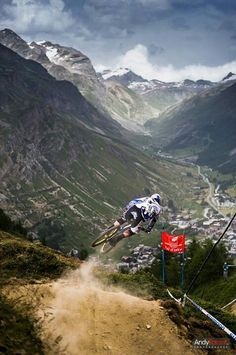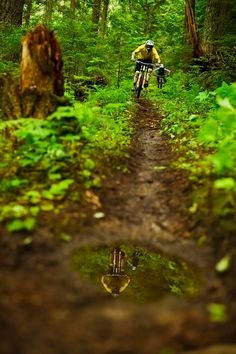Mountain Biking Techniques Before you head off for the mountains, it's important to learn proper riding form. When sitting on your bike, your legs should be just shy of fully extended on the downstroke (when the pedal is at the lowest point). You should still be able to apply some pressure to the pedal at this point without stretching or reaching. If the bike fits you properly, and you're using the right technique, your knees will never be locked at any point during your ride .

Mountain biking is still a relatively new activity whose environmental impact and contribution to trail degradation is poorly understood. As with all recreational pursuits, it is clear that mountain biking contributes some degree of environmental degradation. In the absence of adequate research, land and trail managers have frequently been cautious, implementing restrictive regulations in some instances (Edger 1997).

Surveys of managers have shown that they frequently perceive mountain biking to be a substantial contributor to trail degradation but lack scientific studies or monitoring data to substantiate such concerns (Chavez and others 1993; Schuett 1997). In recent years, however, a small number of studies have been conducted that help clarify the environmental impacts associated with mountain biking.

This article describes the general impacts associated with recreational uses of natural surface trails, with a focus on those studies that have examined mountain biking impacts. Mountain biking is a great adventure and fun.





